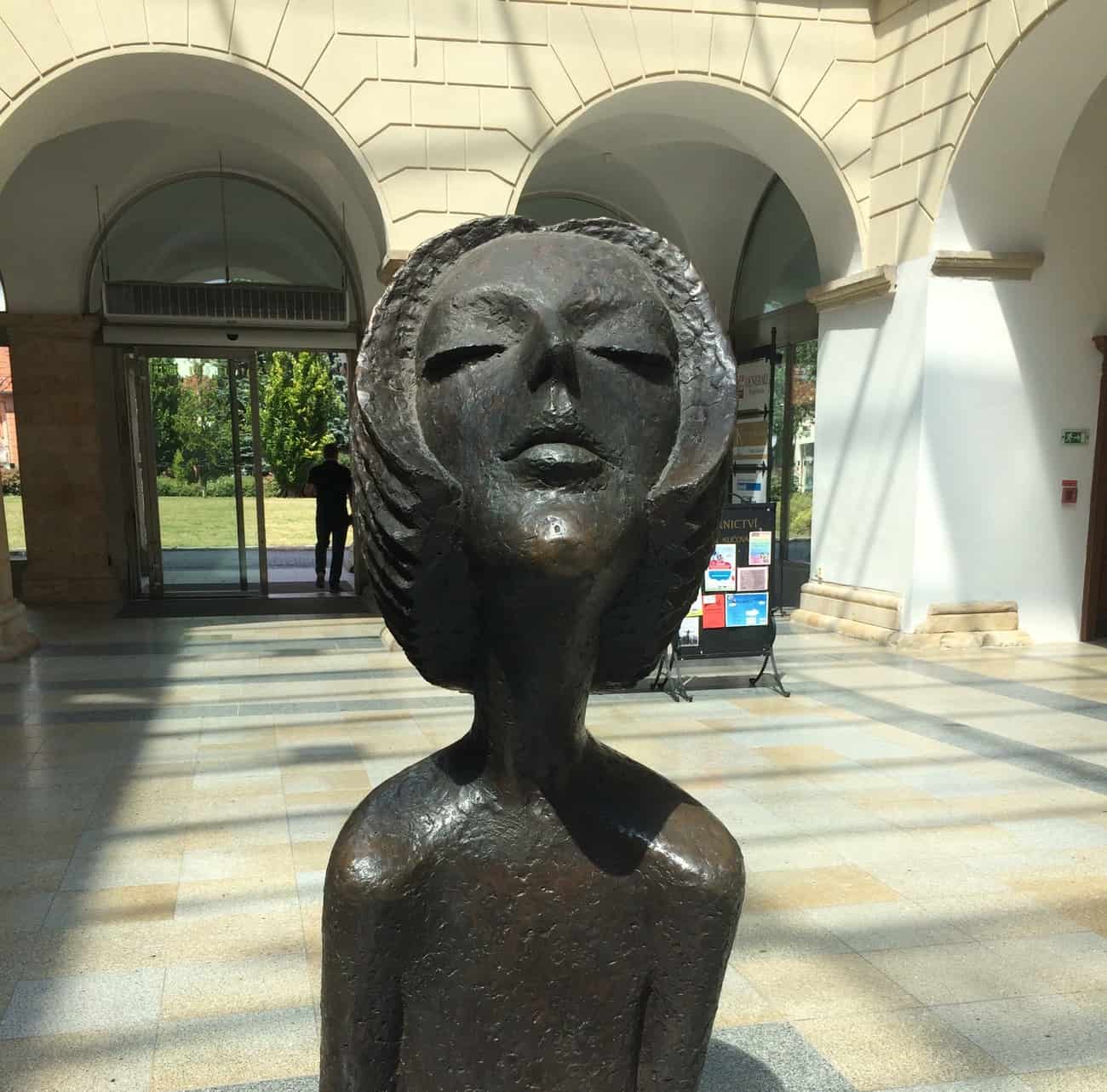
Touring the United Nations in Vienna: Review
We spent three days in Vienna, exploring the city and visiting a number of its great attractions, some of which I wrote about here. But the thing that all of us enjoyed more than any other was our tour of the United Nations.
The United Nations – what is it?
The United Nations is an international organisation that was founded in 1945 by 51 countries. Its aims were (and still are) to maintain international peace and security, develop friendly relations among nations and promote social progress, better living standards and human rights.

Today the UN is a complex organisation with many different bodies and committees all working to provide a forum for its members to express their views and solve problems. The main bodies within the UN are:
- The General Assembly (193 members),
- The Security Council (5 permanent members – China, France, Russian Federation, UK and USA – and 10 non-permanent members, each of whom are elected by the General Assembly for 2-year terms)
- The Economic and Social Council (54 members), which is dedicated to pursuing sustainable development – economic, social and environmental – around the world
- The International Court of Justice
There is also the Secretariat, which is the UN’s executive arm, and the Trusteeship Council, which now only meets as required, since the last remaining UN trust territory gained independence in 1994.
The work of the UN reaches every corner of the globe and its organisations are involved in issues as diverse as peacekeeping, disaster relief, expanding food production, counter terrorism, gender equality and human rights. Ultimately its goals are to create a safer world for this and future generations.
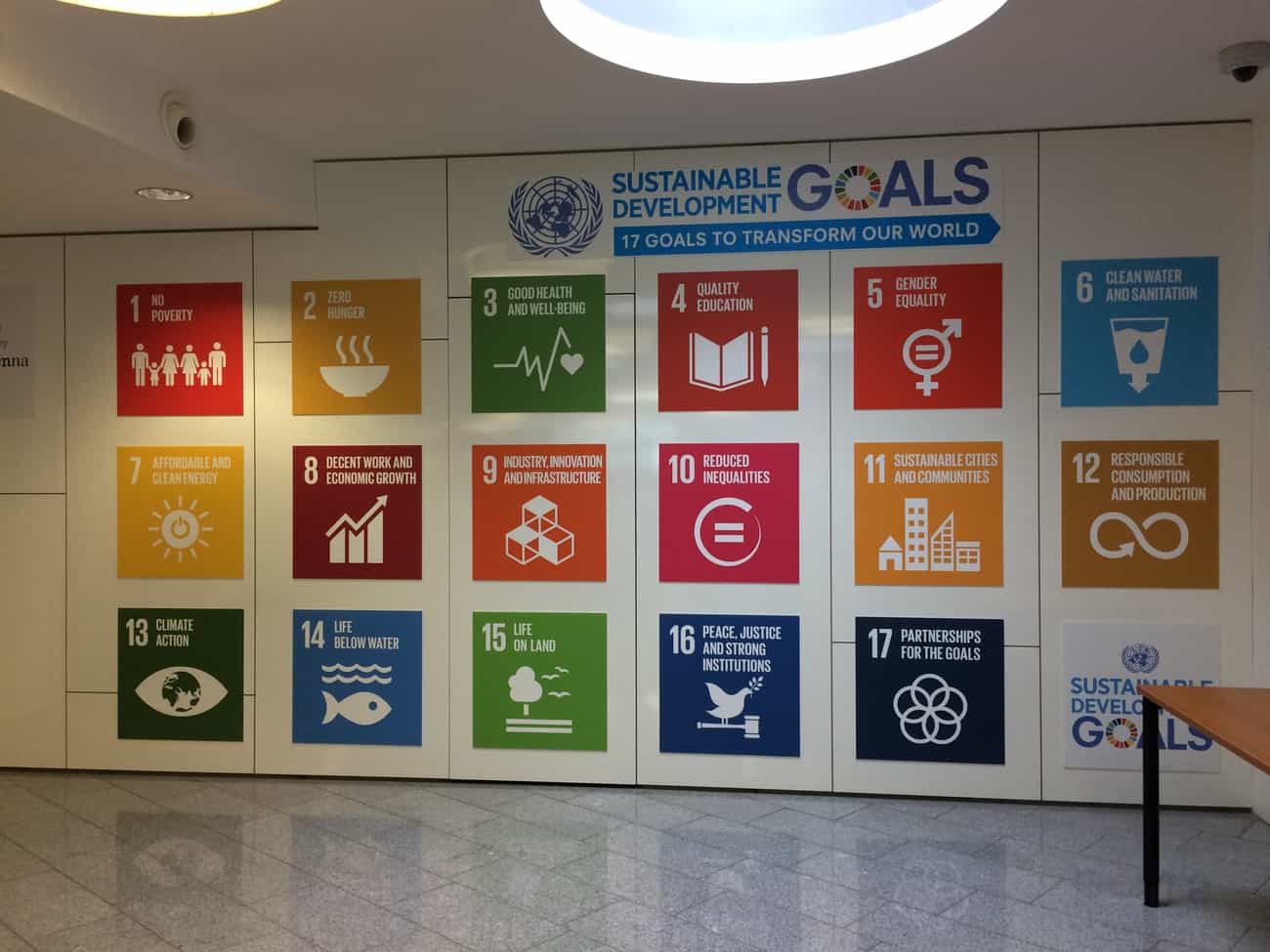
United Nations Organisations in Vienna
Vienna is one of the four headquarters of the United Nations, along with New York, Geneva and Nairobi. It is based in the specially built Vienna International Centre (VIC) in the city, which opened in 1979. More than 4,000 employees from over 110 countries work for the many UN organisations that are based here, which include:
- The International Atomic Energy Authority (IAEA) which works to promote the safe, secure and peaceful use of nuclear technologies.
- The United Nations Industrial Development Organisation (UNIDO) which works to improve the quality of life for the world’s poor.
- The United Nations Office on Drugs and Crime (UNODC), which helps member states reduce their vulnerability to drugs and crime, to counter corruption and terrorism and to promote security and justice for all.
- The Preparatory Commission for the Comprehensive Nuclear-Test-Ban Treaty (CTBTO PrepCom) which is working towards the implementation of the Comprehensive Nuclear-Test-Ban Treaty (CTBT), under which no country will be able to perform test explosions of nuclear weapons anywhere on the planet’s surface, in the atmosphere, underwater or underground.
- The United Nations Office for Outer Space Affairs (UNOOSA) which promotes international cooperation in the peaceful use of outer space for social and economic development for the benefit of everyone.
Touring the United Nations
Every weekday the United Nations Information Service run tours in English and German where you get to look around inside the UN and gain a unique perspective on the work of its different organisations.
When do the tours take place?
General tours take place three times a day (11am, 2pm and 3:30pm), Monday to Friday. All tours are offered in English and German.
Note that on Wednesdays, the 3:30pm tour is not a general tour but instead focuses on the art collection at the Vienna International Centre. Additional tours may be available during local school holidays and there are no tours on official UN holidays. See the UN Vienna website for the most up to date information.
Where do the tours start from?
The tours start from the main entrance (Gate 1) of the Vienna International Centre (VIC). From the centre of Vienna, take the underground line U1 towards Kagran and get off at the station marked Kaisermühlen/VIC. As you come out of the underground station, Gate 1 is just on your left up some steps.
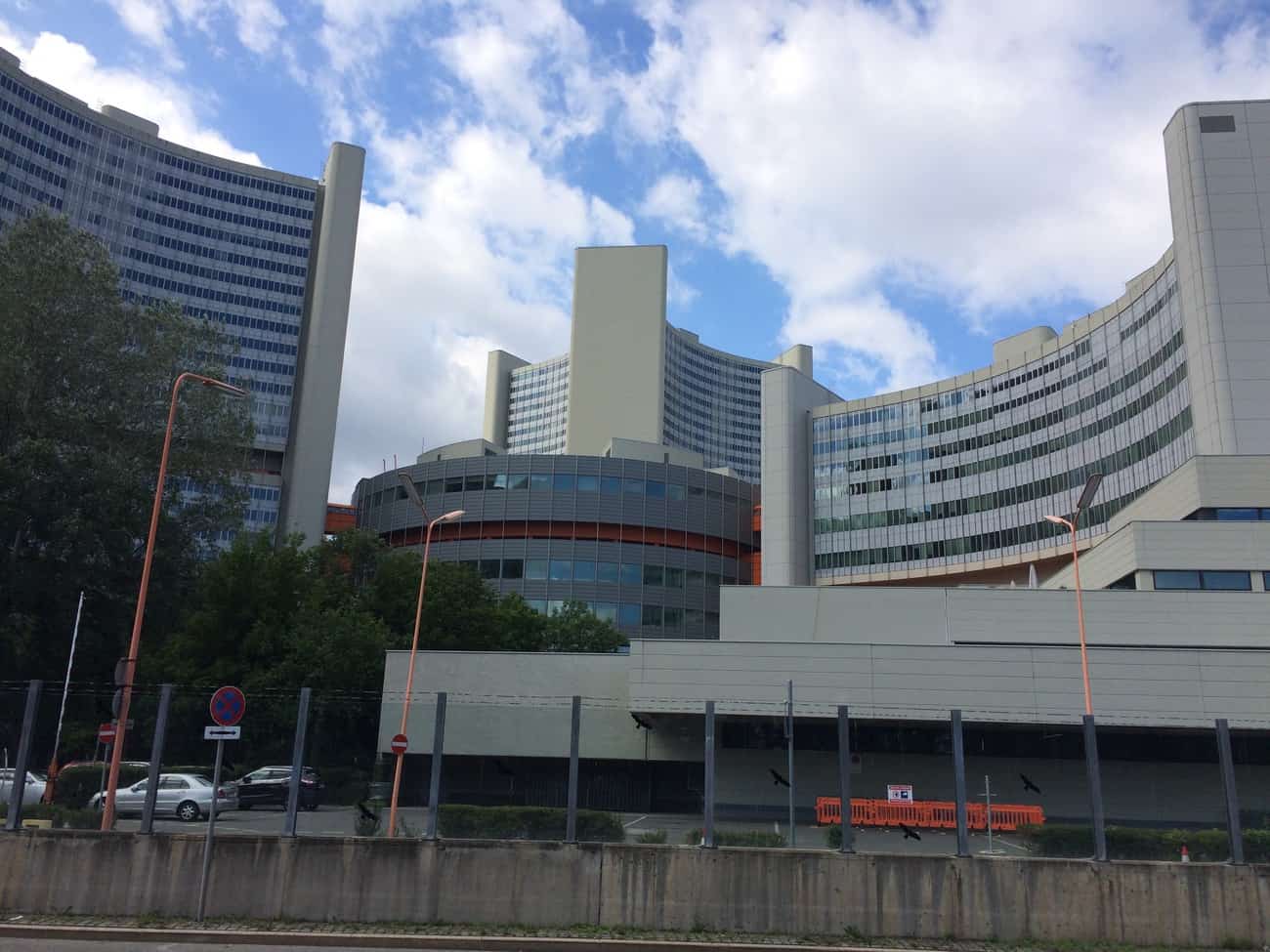
Who can go on the tours?
The tour is suitable for everyone and you don’t need to have any prior knowledge of the UN, which was good since we realised when the girls started asking questions that our understanding of what the UN was and what it does was rather sketchy! On the tour our guide explained things in a non-technical way and was very happy to answer questions if there was anything we needed explaining further.
There is no need to book, but you do need to arrive in plenty of time to get through the security screening and obtain your visitor pass before the tour starts.
Do you need to take anything with you?
Yes. In order to obtain your security pass to go on the tour, you need to take a valid piece of photo ID such as a passport or Driving License with you.
How much does it cost?
At the time of our visit, the fees for the guided tour were €10 for adults and €5 for school aged children. We also got a small discount with our Vienna Card public transport tickets.
What to expect when you arrive
We arrived at the VIC quite early and intended to get our tickets and then come back later. However, the security guard outside the building sent us away, telling us to come back about 15 minutes before the start of the tour.
Once inside the building, the first thing you have to do is pass through some airport-style screening where your bags are x-rayed and you have to walk through a metal detector. After this you proceed to the desk where you can purchase your tickets for the tour. Once you have your ticket you are then directed over to the security office opposite where you wait to obtain your security pass. For this they need to see your photo ID and will also take a photograph of you which they put on the computer. This is all done in a very friendly manner, but it still impresses upon you that this is not any old tour you are about to take.
The reason for all the security is that, as you walk from the reception area into the main part of the Vienna International Centre, you actually leave Austria and enter the international territory of the UN. This was kind of cool and it was interesting to think that all the work carried out here is carried out in this strange bubble that belongs to no nation and yet to every nation.
What do you get to see?
Tours of the UN last about an hour and you usually (although not always) get a chance to see one of the conference rooms where international negotiations take place. You also get so see some of the communal areas of the building and various displays about the work of the UN.
Our tour – what did we see and learn?
Central Plaza
The flags of the 193 member nations of the UN are arranged alphabetically around a circular plaza near the entrance to the VIC. At the right hand side there are two flags set slightly apart from the others. These are the flags of Palestine and the Vatican City and these two countries are observers rather than full members of the UN: they can sit in on conferences, but they don’t have a vote.

We asked our guide whether there were any countries who aren’t members of the UN and she explained that there are countries or nation states that are not recognised as such by some or all of the other members of the UN and they are therefore not members. One example of this is Taiwan. Only about 20 UN members recognise Taiwan as an independent country. The People’s Republic of China claims that Taiwan is part of their territory and would therefore block any attempts for it to become part of the UN.
Architecture
Our guide talked about the history and architecture of the VIC and showed us a scale model of the centre. The building was designed by Austrian architect Johann Staber, who won a worldwide competition to secure the contract. There are three office blocks grouped around a central rotunda, making it easy for workers to get from one place to another. The blocks were also designed in a ‘Y’ shape so as to maximise the amount of natural light that floods into all of the offices.

In the central rotunda there are lots of services like shops, a post office, banks, hairdressers, a kindergarten etc. Since most of the delegates that work at the VIC live in Vienna itself, they mostly spend Euros here, but because the VIC isn’t officially part of Austria, they could use any currency.

Our guide told us that the rotunda is at the heart of the VIC and is a good place for delegates to meet to discuss issues. There was lots of artwork displayed around its walls, and in the rest of the centre as well, and these are usually donated by member countries.
Conference Rooms
There are 9 conference rooms within the VIC and we were lucky enough to see a live conference taking place during our tour. This made our guide’s explanation of how the conferences are structured and organised especially interesting. For example, we learnt that all the conferences are simultaneously translated for delegates. There are six official languages used at the UN and these are Arabic, Chinese, English, French, Spanish and Russian. However, not all six are used for every conference because the cost of translators is so great. We could see the translation booths up above the delegates heads and apparently it is such a difficult job with no margin for error that they need two interpreters for each language being translated at a conference. Interpreters must be fluent in at least 3 of the 6 official languages and also have a masters degree in interpretation.
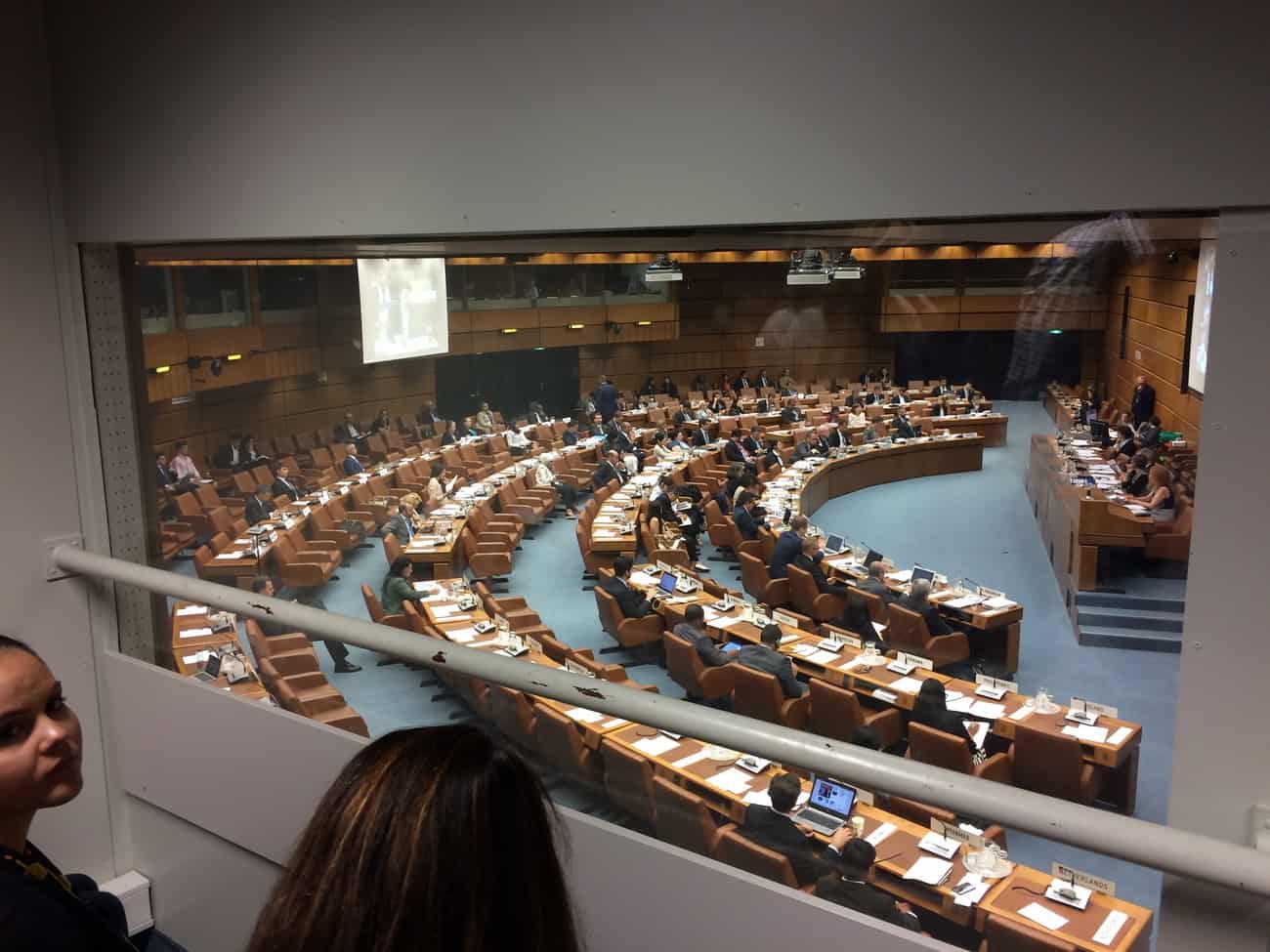
There is one chair and desk for each member country attending the conference and these are arranged in a semi-circle facing the front. In between the rows of desks is another row of extra chairs for additional delegates who are allowed to attend – up to three from each country. These might be specialists or advisors etc. Apparently conferences usually last a minimum of 3 hours.
Whilst some conferences are confidential, you can watch many of them via the UN’s web tv website.
The work of the UN
During the rest of the tour, our guide talked us through some of the displays around the building that highlight some of the work of the UN.

One of the things that she seemed most proud of and took particular delight in explaining to us is the UN’s 17 Sustainable Development Goals. I wondered why I had never heard of these. Have you? These goals were discussed and agreed by world leaders at a historic UN summit in New York in September 2015 and they offer hope for the future of the world by ending extreme poverty, combating climate change and fighting injustice. Our guide explained that one of the most remarkable things about these goals is that they were unanimously agreed and adopted by all 193 members of the UN, something that is apparently extremely rare. They set a universal standard for development which aims to ensure that no-one is left behind.
These are lofty ideals and ambitious goals, but each one has targets and indicators behind it so that they can measure their success in working towards it. No poverty. Zero hunger. Good health and wellbeing. Quality education. Gender equality. Clean water and sanitation. Who wouldn’t want these for all countries and citizens of the world? They call them “17 goals to transform our world” and the aim is to achieve them by 2030. The so-called ‘2030 Agenda for Sustainable Development’ calls for action by all countries (both developed and developing) as well as all people (that means you and me), to take action. I have a feeling we are all going to hear more about these goals in the coming years. If you are interested and want to know how you can take action now, or if you are sceptical that you can make a difference on such world-changing objectives, you should read their simple publication “The Lazy Person’s Guide to Saving the World”. It sets out things that the average person like you or me can do from our couch, at home and outside our homes: small actions and steps that can really make a difference.
About half of the people that work at the UN in Vienna work for the IAEA, the International Atomic Energy Authority, whose remit is to stop nuclear technology being used for military purposes. We saw the Nobel Peace Prize, awarded in 2005 to all of the people who worked for the IAEA at the time, and its Director General, Dr Mohamed ElBaradei.
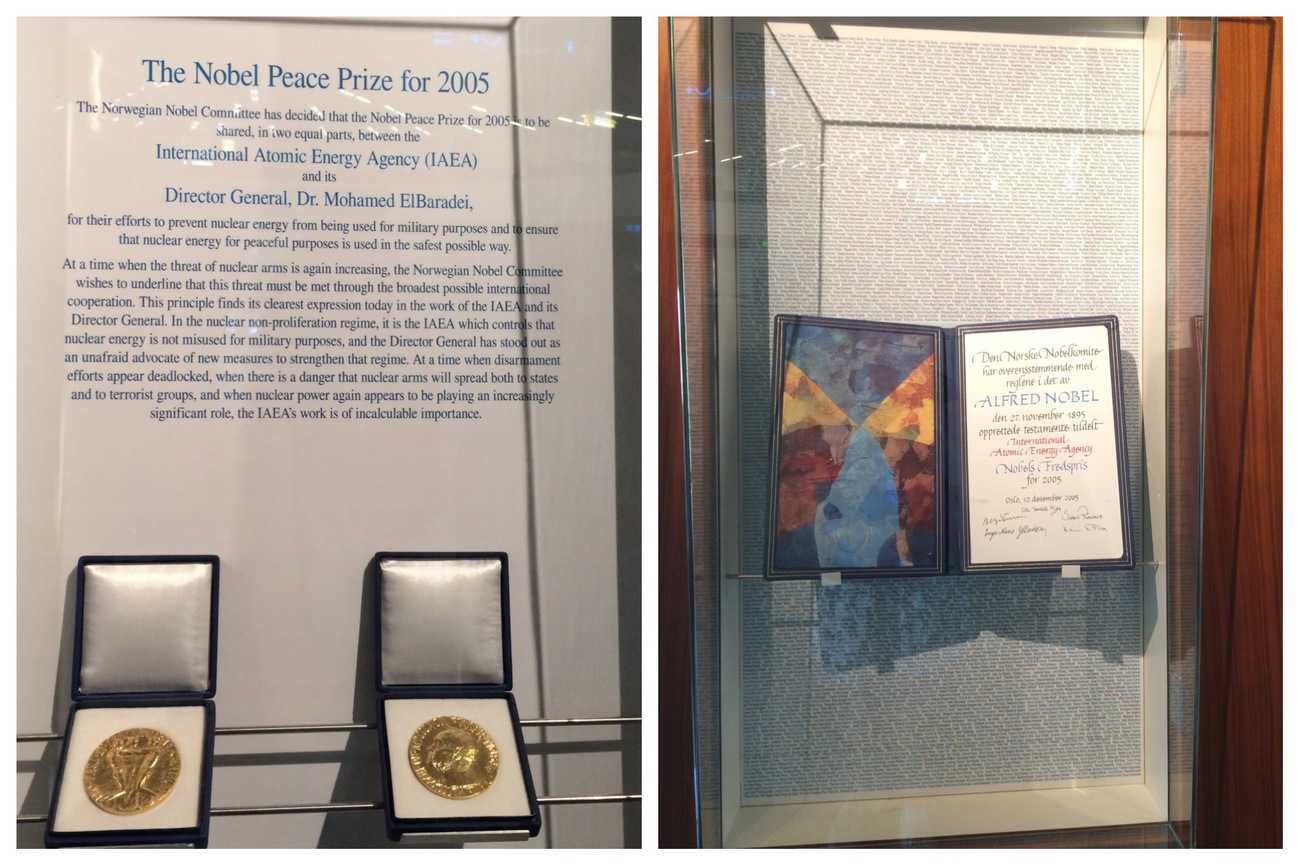
We also learnt about some of the work the UN does in drug control and the long struggle it continues to have to outlaw nuclear testing. Since 1954 when India’s then Prime Minister, Jawaharlal Nehru, called for a stop on nuclear testing, the UN has been striving to get worldwide agreement on this issue. There are only 8 countries left who still haven’t signed up to the Comprehensive Nuclear-Test-Ban Treaty (CTBT). If the UN finally gets these countries to sign up, the treaty will be entered into force and no country will be able to perform test explosions of nuclear weapons anywhere on the planet’s surface, in the atmosphere, underwater or underground. I look forward to this day.
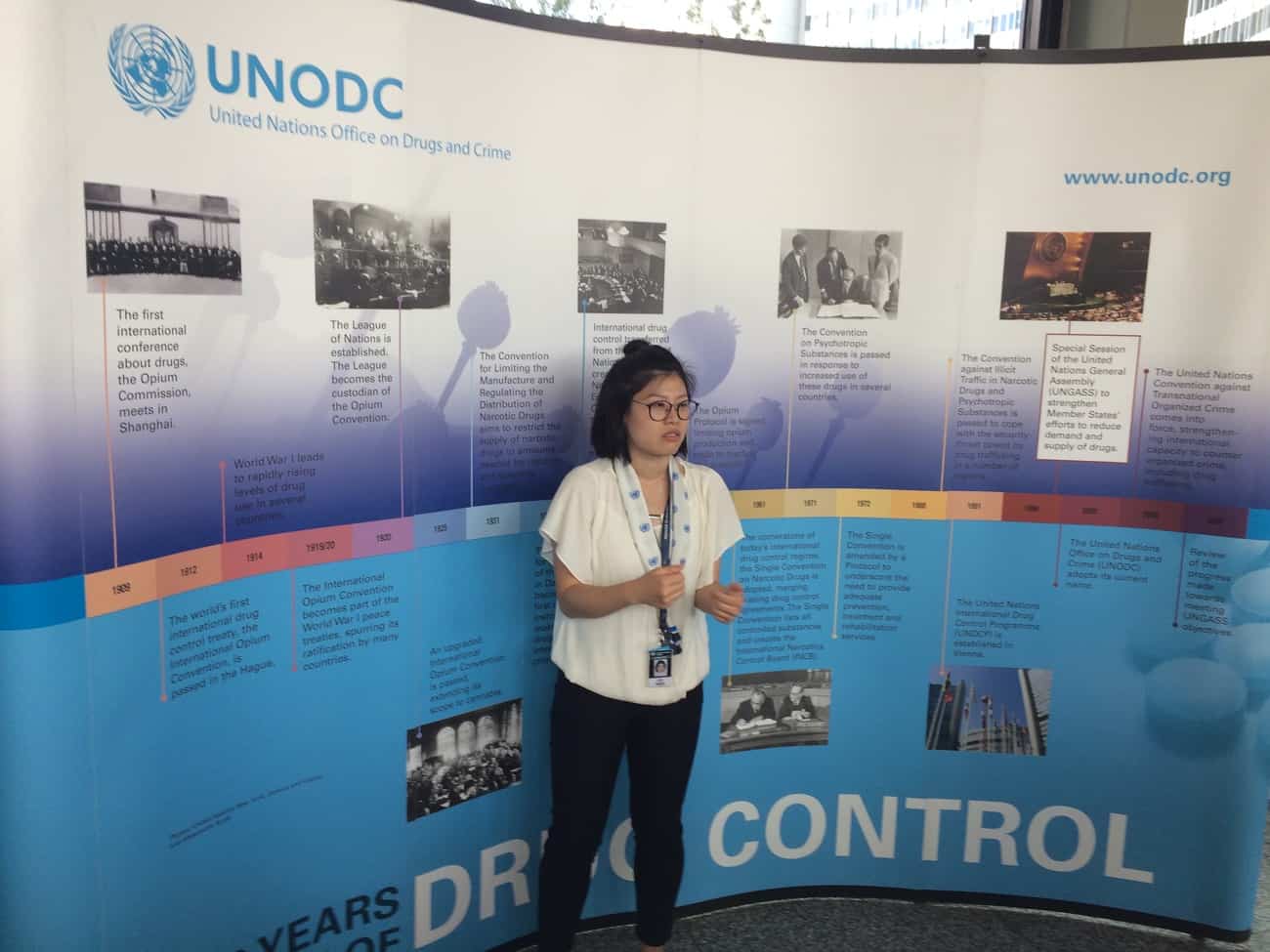
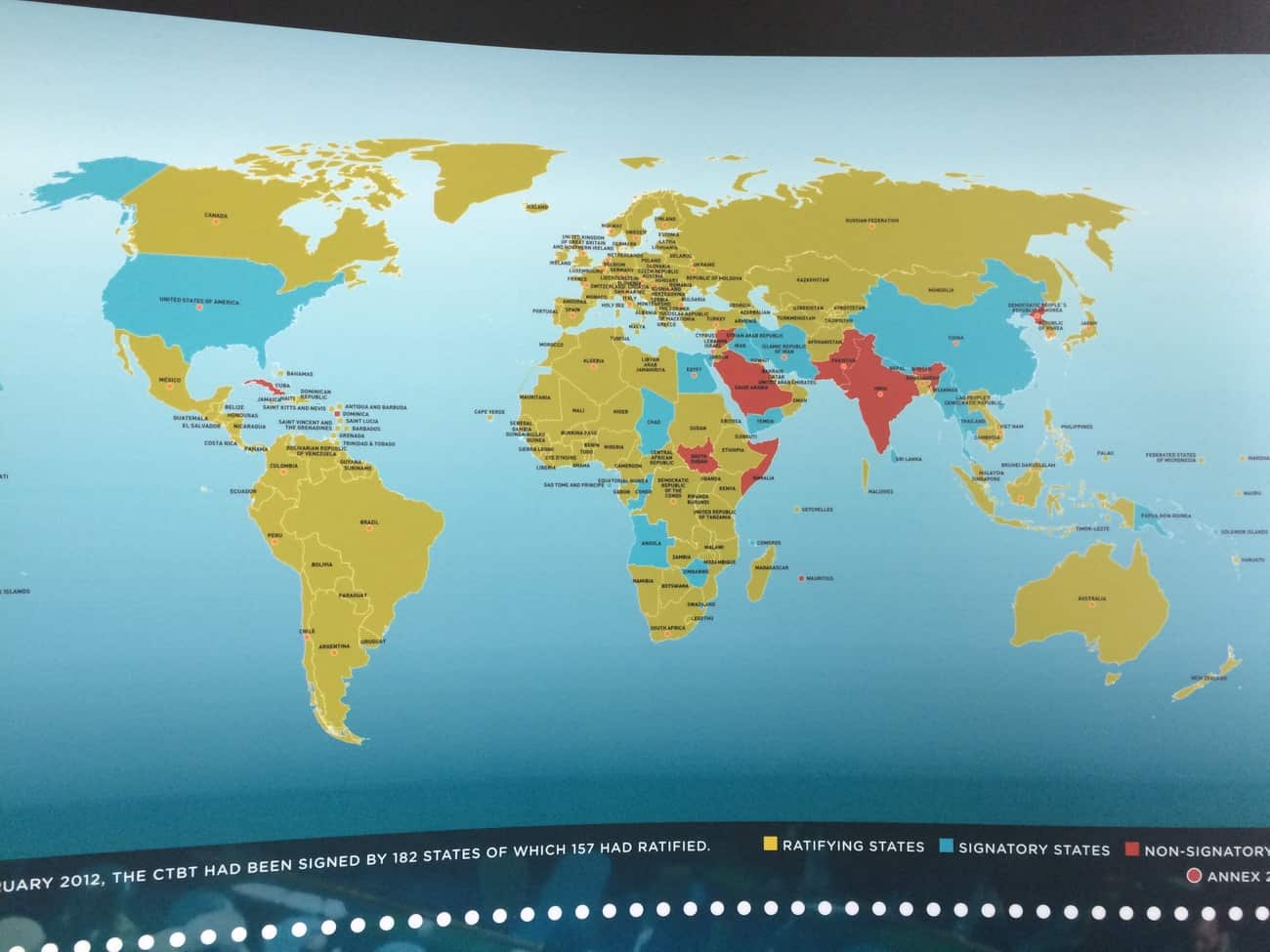
The final part of the tour allowed us to see a real moon rock, on loan from NASA, along with a display about space exploration. Our guide explained that outer space officially belongs to all of humanity and the UN is at the forefront of making laws and promoting international cooperation in the peaceful use of this new frontier for the benefit of everyone.
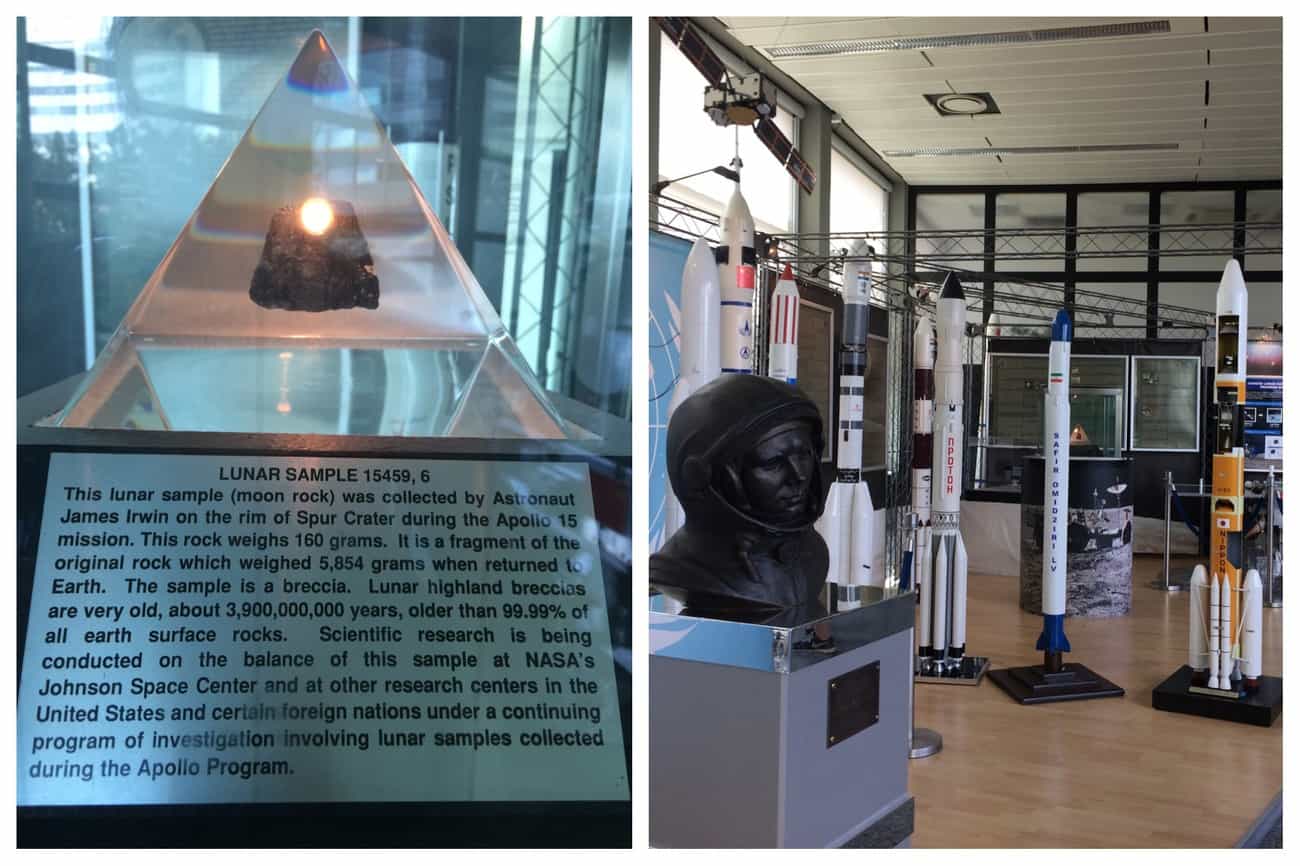
How did we rate the visit?
This is a fascinating and informative tour of one of the world’s most important organisations. Our guide was very open and spoke to us all in plain English, which meant that the girls could understand what she was talking about as well as we could. It was a small tour group and we had to all stay together: our guide joked that she would be in a lot of trouble if she ‘lost’ one of us because the whole building would be put into lockdown until we were found.
We were allowed to take photographs everywhere, although she cautioned us not to use flash when we were in the viewing area above the conference room because there was actually a conference going on. Apparently security would chase us out if we were disruptive to the conference.
Our guide was very knowledgeable and answered all of our questions patiently, no matter how simple or how technical they were. We came away having a much deeper knowledge of what the UN is and what it does. Yes, we could probably have read all of this information online without needing to set foot inside the UN at all, but there is nothing quite like having been and experienced somewhere first hand to make you understand and remember it better. As we toured around, UN employees from many different nations passed us in corridors and lifts, often in deep discussion with one another. People with different skin colour. People wearing different clothes. People from different cultures. All working together for a better future for the world that we share.
The tour could’ve been just a worthy PR exercise on behalf of the UN, but in actual fact the enthusiasm of our guide for the organisation for which she works was infectious. Being there, seeing the many delegates and representatives of so many diverse nations, made us engage with the aims and goals of the UN like no other experience could’ve done. I highly recommend it everyone who visits Vienna.
Important things to remember:
Take a valid photo ID with you
Allow at least 15-20 minutes before the tour to get through security.
